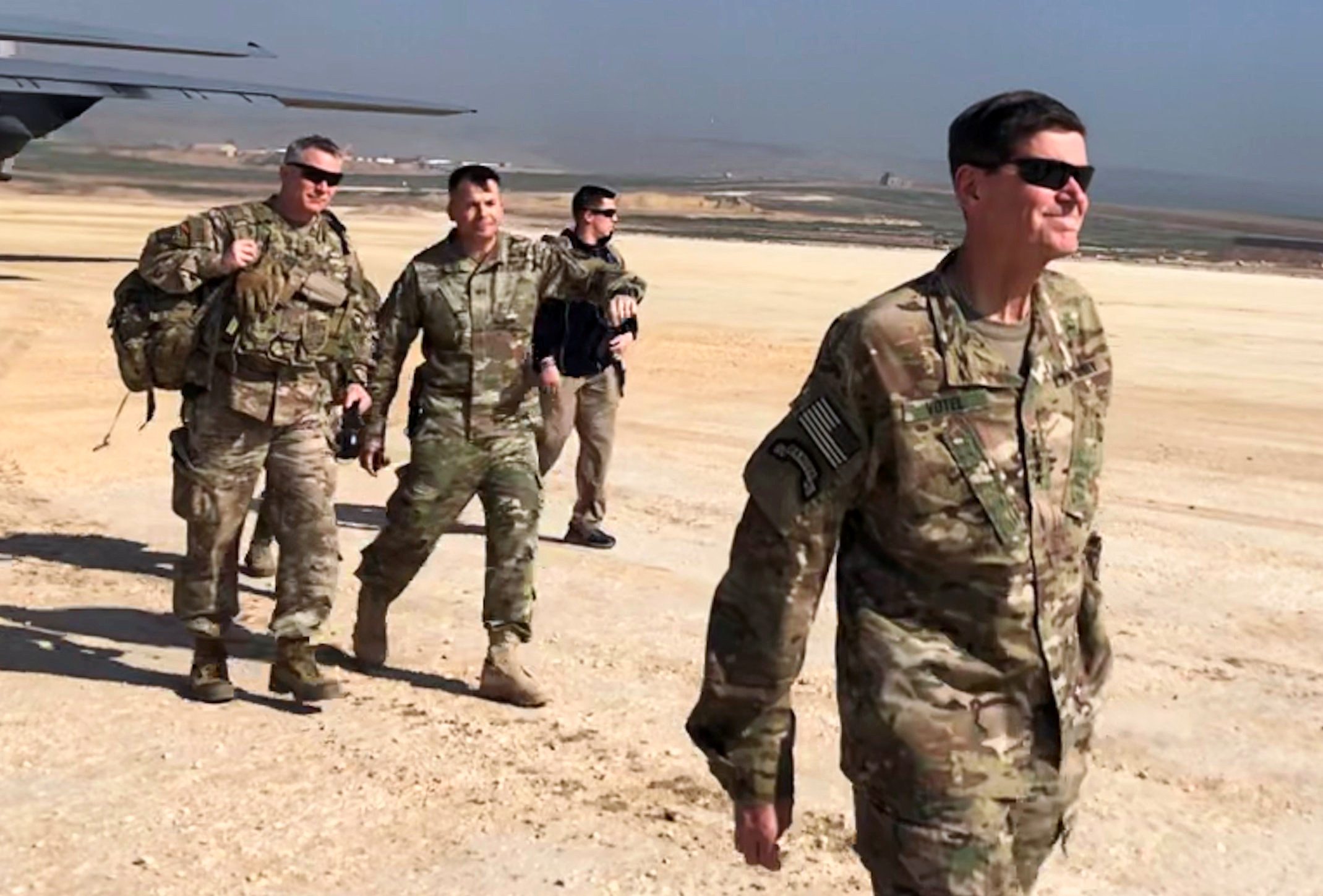
By Phil Stewart
AIRBASE IN NORTHEAST SYRIA (Reuters) – The commander of U.S.-backed forces in Syria called on Monday for about 1,000 to 1,500 international forces to remain in Syria to help fight Islamic State and expressed hope that the United States, in particular, would halt plans for a total pullout.
The remarks by Mazloum Kobani, the commander-in-chief of the Kurdish-led Syrian Democratic Forces, followed talks with senior U.S. generals at an airbase in northeast Syria and offered perhaps the most comprehensive view to date of his requests for an enduring military assistance from the U.S.-led coalition.
“We would like to have air cover, air support and a force on the ground to coordinate with us,” Kobani told a small group of reporters who traveled with the U.S. military to an airbase at an undisclosed location in northeast Syria.
With U.S. help, the Kurdish-led fighters are poised to seize Islamic State’s last holdout in eastern Syria. At the height of its power four years ago, Islamic State held about a third of both Iraq and Syria in a self-proclaimed Caliphate.
But Islamic State still has thousands of fighters, who, now dispersed, are expected to turn to guerrilla-style attacks.
Kobani said there was discussions about perhaps French and British troops supporting the SDF in Syria. But he stressed he also wanted at least “a partial group of American forces,” who now number more than 2,000 in Syria, to stay as well.
U.S. Army General Joseph Votel, head of Central Command, said after the talks with Kobani that he was still carrying out President Donald Trump’s December order for a complete U.S. withdrawal of American forces.
“We certainly understand what they would like us to do, but of course that’s not the path we’re on at this particular point,” Votel told reporters.
U.S. PRESENCE
Asked about any discussions on a continuing U.S. presence in Syria, Votel said: “So the discussion really isn’t about U.S. forces staying here. We’ve looked at potentially what coalition (forces) might be able to do here.”
Trump’s surprise December decision to withdraw all the U.S. troops from Syria has triggered deep concern among U.S. allies about the risk of an eventual resurgence of Islamic State.
But the pullout raises an even more immediate threat to Kobani’s SDF, which fears that Turkey will make good on threats to attack them. He warned of a “new genocide” in SDF controlled areas of Syria.
Kobani thanked Trump for publicly stating his intent to protect the SDF but said: “I want him to live up to his word.”
Without a deal with the U.S.-led coalition, experts say Kobani may have to strike a deal with Syrian President Bashar al-Assad to avoid a Turkish sweep or a resurgence of Islamic State.
Votel is recommending continued support to the SDF as long as it keeps up pressure on Islamic State militants.
But Army Lieutenant General Paul LaCamera, who is the commander of the U.S.-led coalition battling Islamic State in Iraq and Syria, cautioned on Sunday that the United States would be legally unable to support the SDF if they partnered with Assad or Assad’s Russian backers.
Kobani stressed he was not seeking a military deal with
Damascus.
Perhaps sensing an opportunity to stoke doubt among the Kurdish communities, Assad warned on Sunday the United States would not protect those depending on it.
“We say to those groups who are betting on the Americans, the Americans will not protect you,” he said. “The Americans will put you in their pockets so you can be tools in the barter, and they have started with (it).”
Senator Angus King, an independent from Maine, is among the U.S. lawmakers expressing concern the U.S. withdrawal could deal a devastating blow to Kurdish forces and warned that any sense of U.S. betrayal could cast a long shadow for years to come.
“It will chill future potential groups from assisting us if we’re going to treat the people who have been so stalwart on our behalf in this way. It is very dangerous in terms of national security,” he has said.
(Reporting by Phil Stewart; Editing by Alison Williams)








